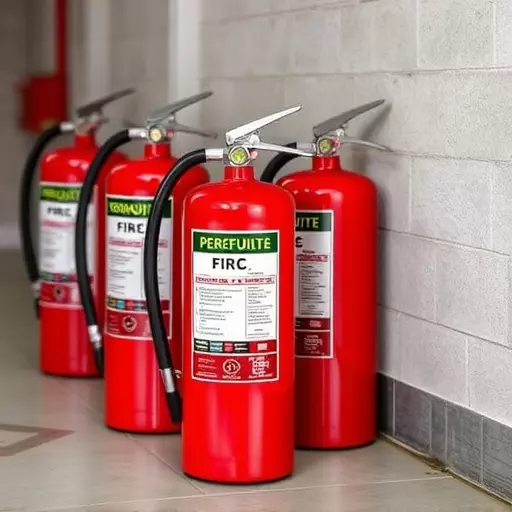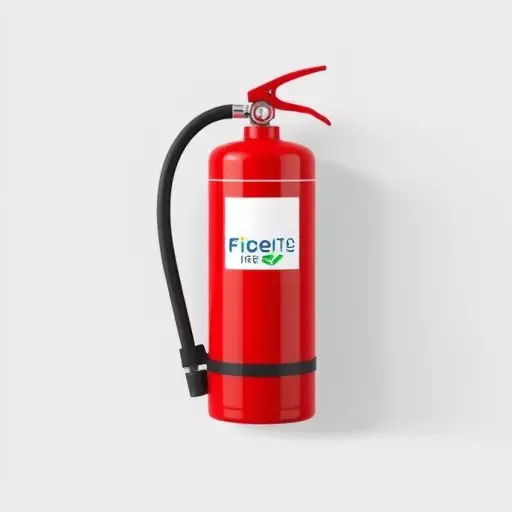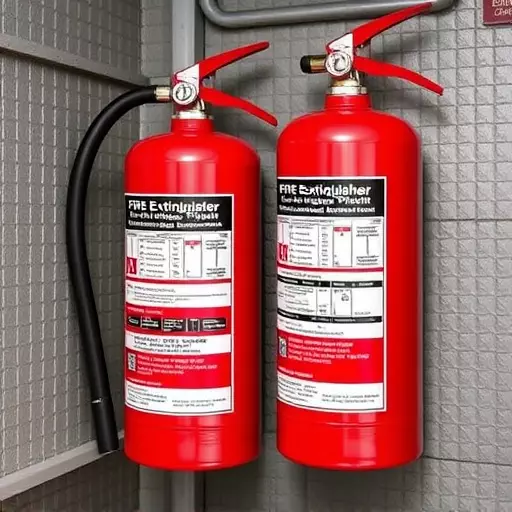Jacksonville's schools adhere to strict fire safety regulations, prioritizing regular and thorough fire extinguisher inspections. This involves a comprehensive Fire Extinguisher Inspection Checklist with both monthly and annual checks. Monthly inspections ensure basic functionality and accessibility, while annual inspections delve into pressure testing, mechanism verification, and corrosion checks. Strict record-keeping is enforced for prompt issue resolution and maintaining a safe learning environment. Regular inspections, guided by the checklist, are crucial for equipment maintenance, compliance, and swift emergency responses.
“Ensuring the safety of students and staff is paramount in every school, and a crucial aspect is regular fire extinguisher inspections. This comprehensive guide delves into the essential practices for maintaining fire safety in Jacksonville schools. We explore the regulatory landscape and provide an in-depth look at monthly and annual inspection routines.
Our step-by-step process, accompanied by a detailed checklist, equips school administrators with the tools to conduct thorough checks. From identifying common issues to understanding compliance records, this article is your go-to resource for fire extinguisher safety, specifically tailored to Jacksonville’s regulations.”
- Understanding Fire Extinguisher Regulations for Schools in Jacksonville
- The Importance of Regular Inspections: Monthly and Annual Schedules
- Creating a Comprehensive Fire Extinguisher Inspection Checklist
- Step-by-Step Process for Conducting School Fire Safety Checks
- Common Issues Found During Fire Extinguisher Inspections and How to Address Them
- Maintaining Records and Ensuring Compliance for School Fire Safety
Understanding Fire Extinguisher Regulations for Schools in Jacksonville

In Jacksonville, fire safety regulations for schools are stringent and clearly defined to ensure the protection of students and staff. When it comes to fire extinguishers, regular inspections are non-negotiable. A comprehensive fire extinguisher inspection checklist Jacksonville should be followed to meet these requirements. This includes both monthly and annual fire extinguisher inspections.
Monthly inspections focus on basic functionality and accessibility, ensuring that extinguishers are properly mounted, labels are legible, and pins are intact. Annual inspections go deeper, involving thorough testing of the extinguisher’s pressure and mechanism, as well as checking for any signs of damage or corrosion. Schools must maintain detailed records of these inspections, making it easier to track maintenance history and address potential issues promptly.
The Importance of Regular Inspections: Monthly and Annual Schedules

Regular fire extinguisher inspections are non-negotiable for schools and educational institutions. These checks are vital to ensuring the safety of students, faculty, and staff in the event of a fire emergency. A comprehensive inspection involves assessing each extinguisher’s functionality, maintenance history, and compliance with local fire safety regulations. By implementing a structured schedule, schools can maintain an effective fire safety system.
For optimal protection, it is recommended to conduct monthly fire extinguisher inspections. This routine allows for prompt identification and resolution of any issues, such as damage, corrosion, or battery expiration. Additionally, annual inspections are indispensable. These thorough assessments cover all aspects of the fire extinguisher systems, including testing, cleaning, and overall condition evaluation. Adhering to these inspection schedules, as outlined in the Fire Extinguisher Inspection Checklist Jacksonville, enables schools to stay prepared for any potential fire hazards and respond swiftly during emergencies.
Creating a Comprehensive Fire Extinguisher Inspection Checklist

Creating a comprehensive fire extinguisher inspection checklist is paramount for ensuring school safety in Jacksonville. A well-crafted checklist should include detailed steps to assess each extinguisher’s functionality, location, and condition. This involves verifying pressure levels, examining expiration dates, inspecting for any signs of damage or corrosion, and ensuring clear access without obstructions. Regularly updating the checklist based on manufacturer guidelines and regulatory standards is crucial.
Monthly fire extinguisher inspections should focus on basic functionality and proper placement, while annual inspections delve deeper into maintenance and replacement needs. A thorough checklist guides school staff in conducting these checks efficiently, identifying potential issues early on, and ensuring that fire extinguishers are ready for use when needed.
Step-by-Step Process for Conducting School Fire Safety Checks

Conducting regular fire safety checks is non-negotiable for schools to ensure the well-being of students and staff. Here’s a step-by-step process to guide your fire extinguisher inspection checklist Jacksonville schools should follow. Begin by assessing each fire extinguisher location, checking for any visible damage or obstructions that might hinder access. Verify that extinguishers are properly mounted on the wall, clearly labeled, and within easy reach, adhering to local fire code regulations. Next, inspect the pressure gauge to ensure it reads “green,” indicating proper functionality. Feel the handle for any signs of heat or debris accumulation. Test the trigger by gently squeezing it to confirm its smooth operation. If all checks are clear, proceed with annual fire extinguisher inspections to verify ongoing reliability. Monthly fire extinguisher inspections are crucial for identifying potential issues before they escalate into hazards.
Common Issues Found During Fire Extinguisher Inspections and How to Address Them

During fire extinguisher inspections in schools, several common issues are often encountered. One of the primary concerns is the lack of accessibility and proper placement of extinguishers. This may include blocked or obstructed paths to fire extinguishers, which can delay emergency responses. To address this, a thorough review of the inspection checklist should be conducted, ensuring that extinguishers are mounted at safe heights, easily visible, and not impeded by furniture or other obstacles. Regular cleaning and maintenance of these devices is also crucial, as dirt or debris can hinder their functionality in an emergency.
Another frequent issue involves outdated or defective fire extinguishers. It’s essential to keep track of the expiration dates and manufacturer recommendations for replacement. A comprehensive inspection should include a check on the pressure gauge, ensuring the extinguisher is fully charged and operational. If any defects are found, they must be reported immediately and rectified promptly. Schools should maintain detailed records of all inspections, repairs, and replacements as part of their fire safety protocols, facilitating annual and monthly fire extinguisher inspections in Jacksonville to ensure optimal functionality and student safety.
Maintaining Records and Ensuring Compliance for School Fire Safety

Maintaining accurate records and ensuring compliance with fire safety regulations is non-negotiable for schools. Regular fire extinguisher inspections, both monthly and annual, are a critical component of this process. A comprehensive fire extinguisher inspection checklist Jacksonville should be employed to evaluate each device’s functionality, maintenance status, and adherence to industry standards. All findings, including any repairs or replacements required, should be meticulously documented.
These records serve multiple purposes. They help track the overall fire safety readiness of the school, ensuring that all equipment is in working order and up-to-date with necessary maintenance. Additionally, they provide evidence of compliance with local fire codes and regulations, which can be crucial during inspections by regulatory bodies. Proper documentation also enables schools to quickly address any issues identified during inspections, enhancing their ability to protect students, faculty, and staff effectively.


